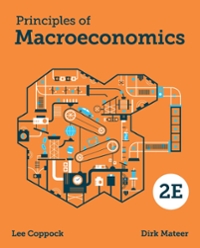2. For this problem, we want to practice working with the aggregate demandaggregate supply model. a. Set
Question:
2. For this problem, we want to practice working with the aggregate demand–aggregate supply model.
a. Set up an aggregate demand–aggregate supply model in long-run equilibrium, with both short-run and long-run aggregate supply curves and an aggregate demand curve.
Label the equilibrium price level as P* and the equilibrium level of real GDP as Y*. Draw this model twice.
b. Using the first set of curves you drew in part
(a), now assume that aggregate demand and aggregate supply (both short-run and longrun) decline. If all curves shift by the same amount, what is the resulting change in real GDP and the price level? What is the implied change in the unemployment rate?
c. Now, using the second set of curves from part (a), let aggregate demand decline by a large amount while the aggregate supply curves decline by a relatively small amount.
What are the resulting short-run changes in real GDP and the price level? What is the implied short-run change in the unemployment rate?
d. Parts
(b) and
(c) describe the two different conditions of the Great Recession and the Great Depression. Which part refers to the Great Recession? Which part refers to the Great Depression?
Step by Step Answer:







